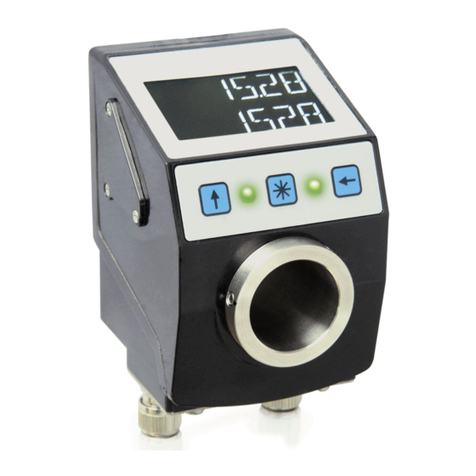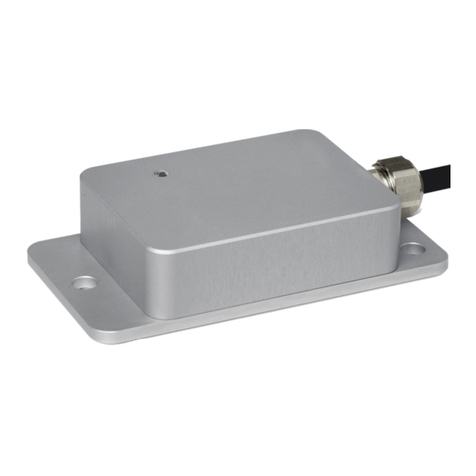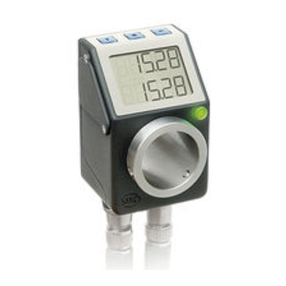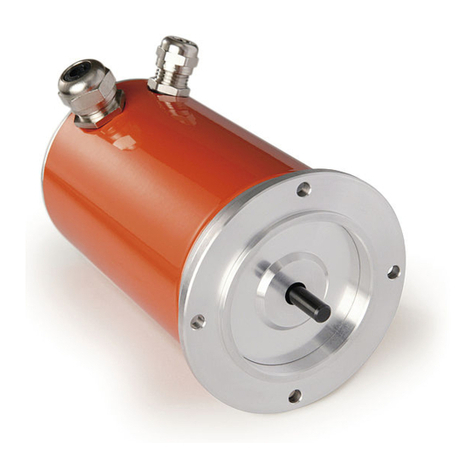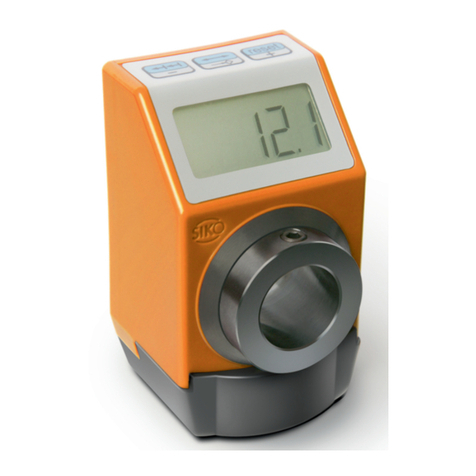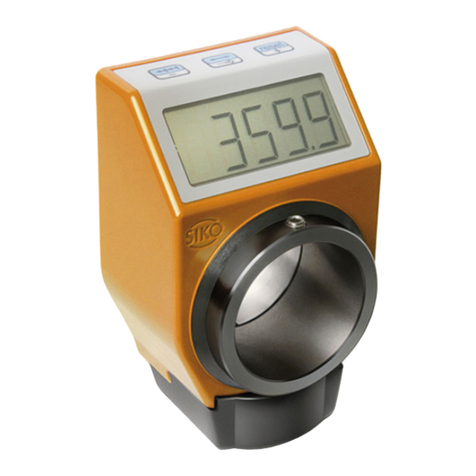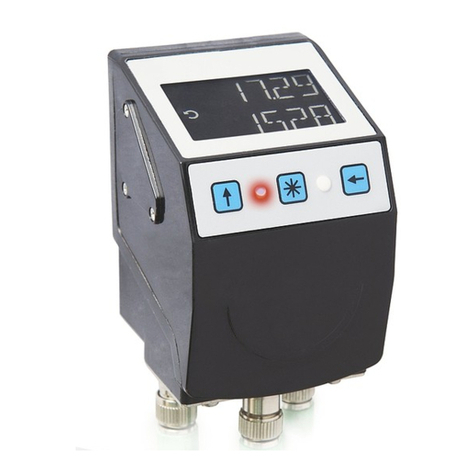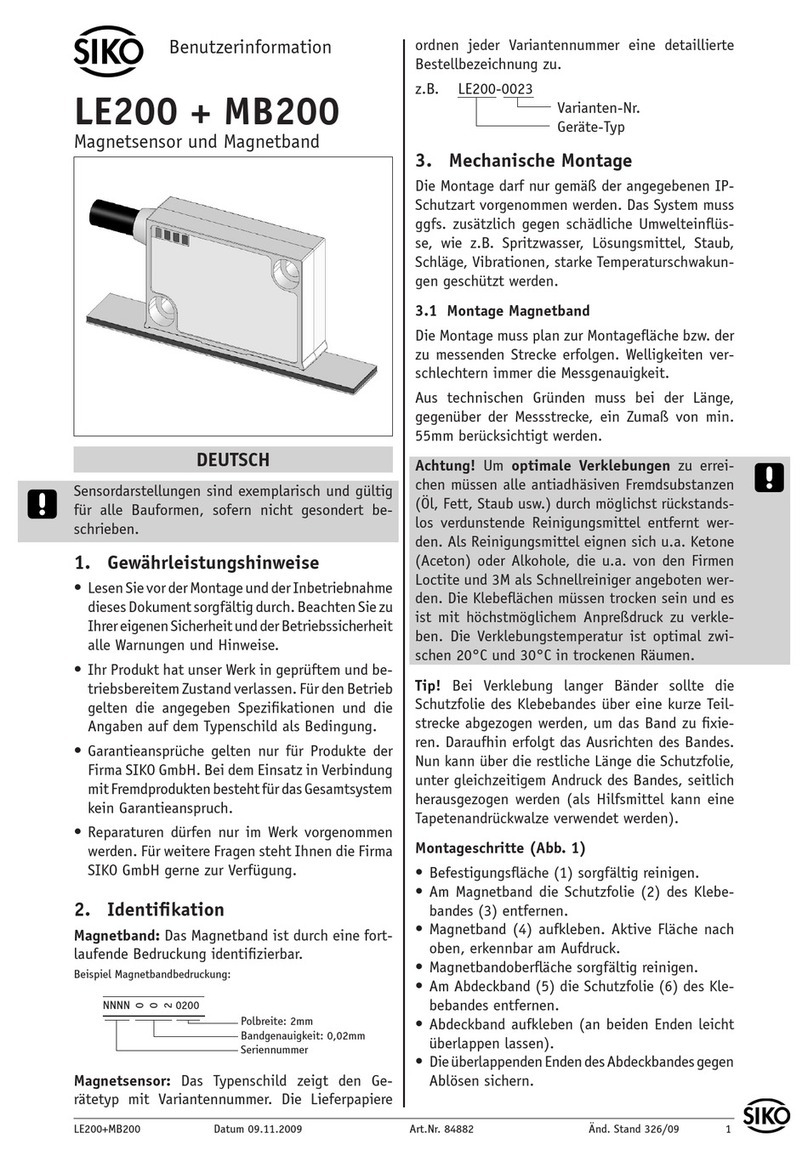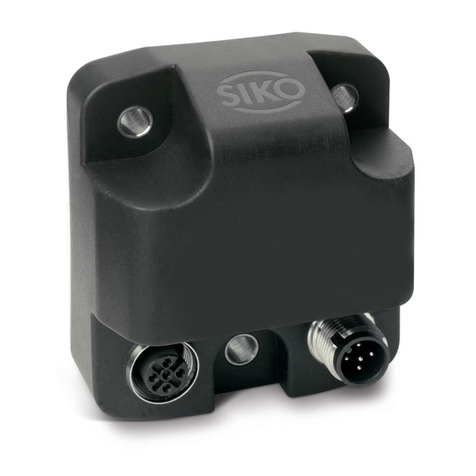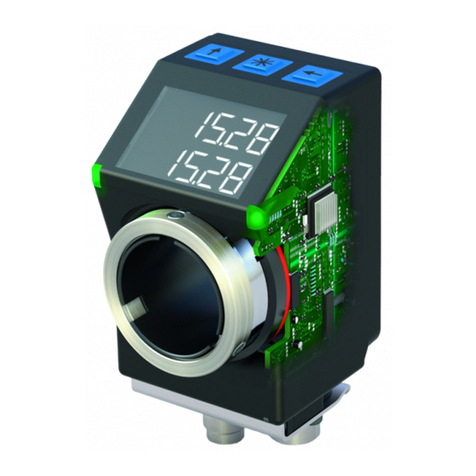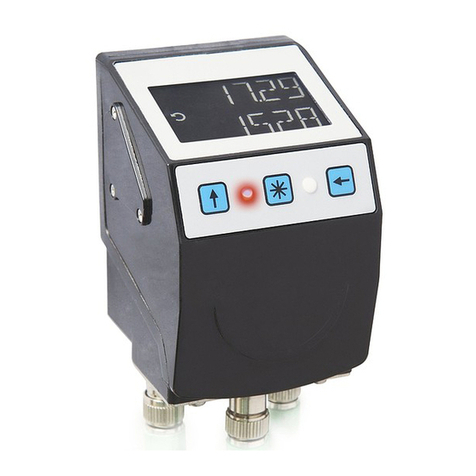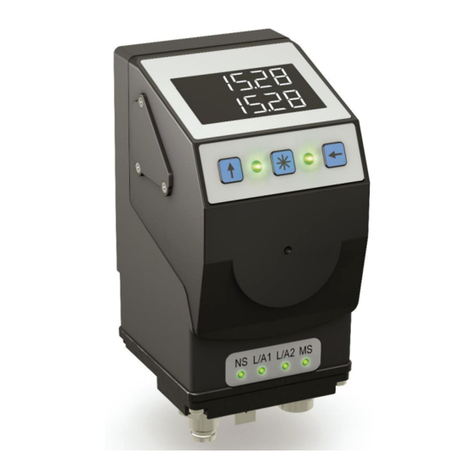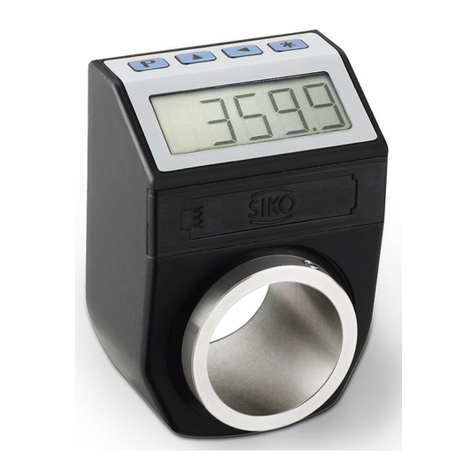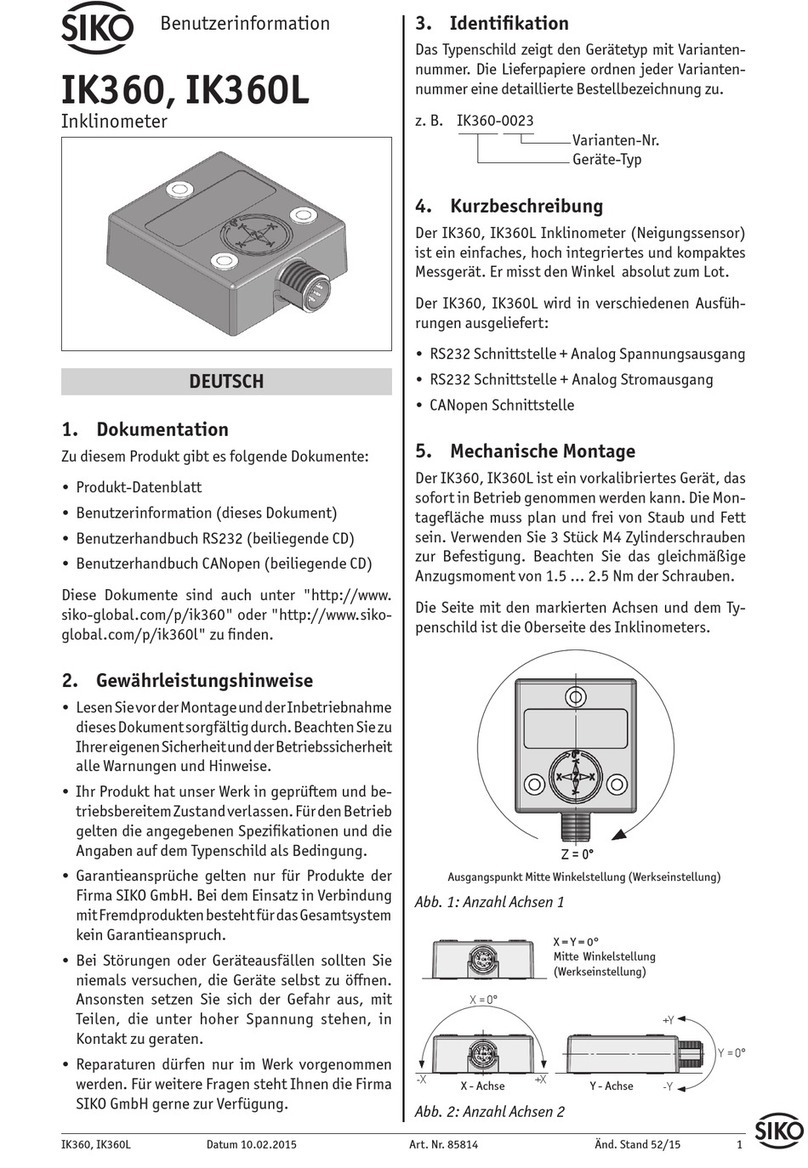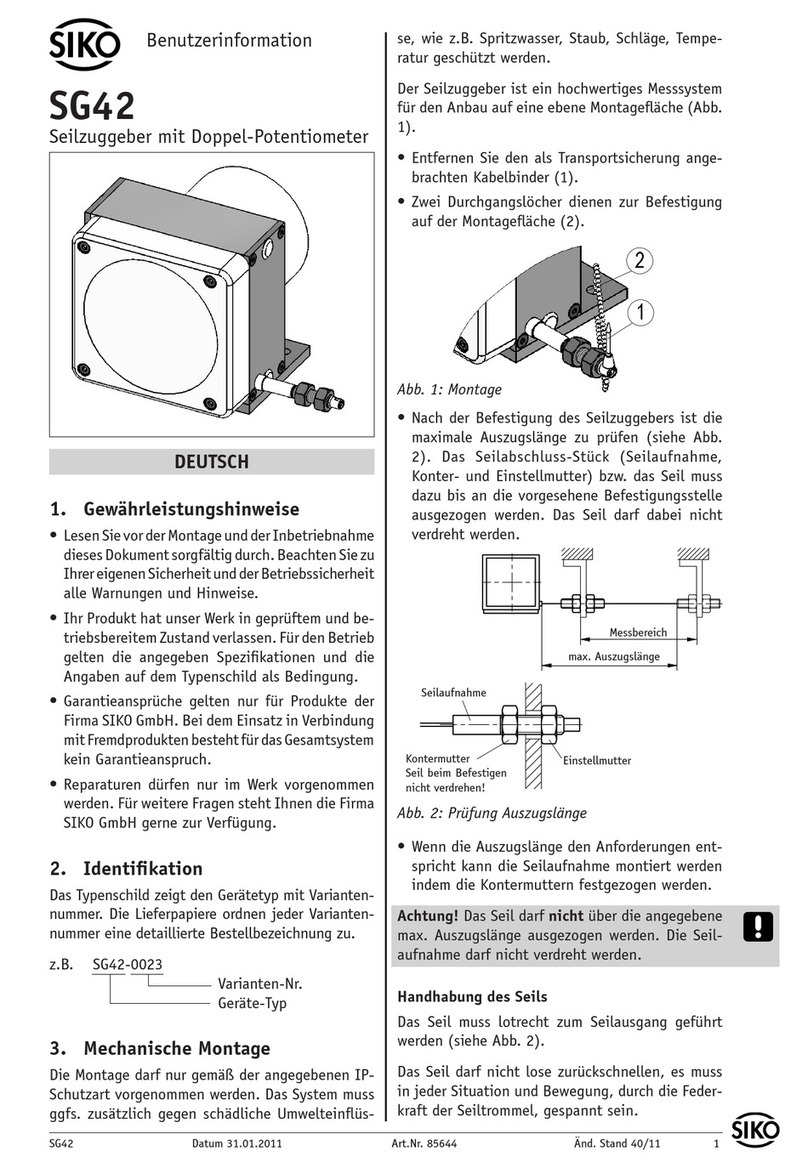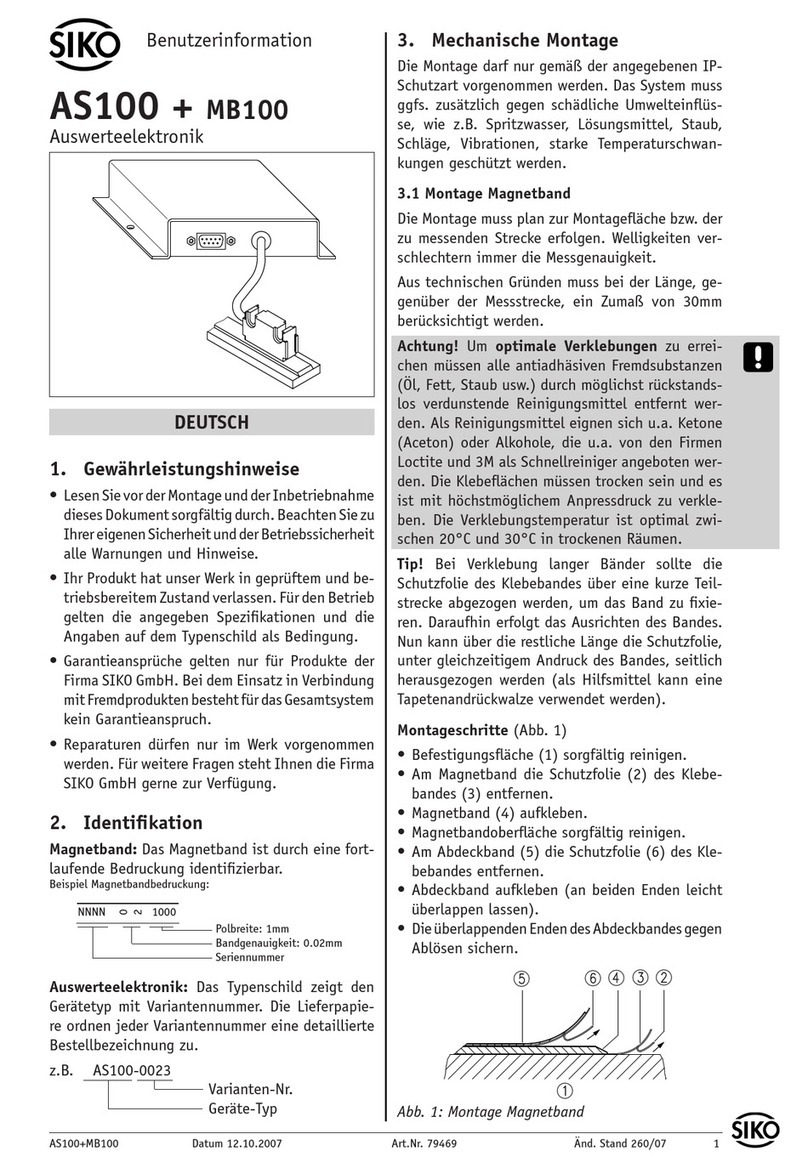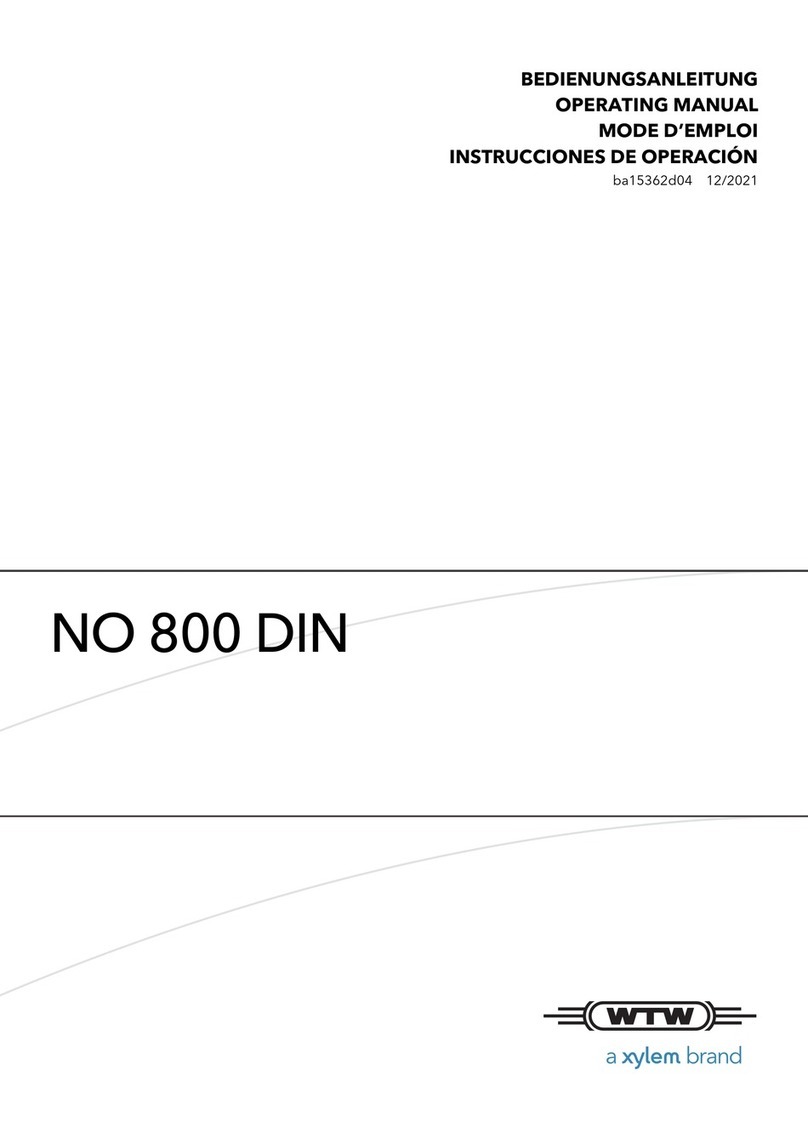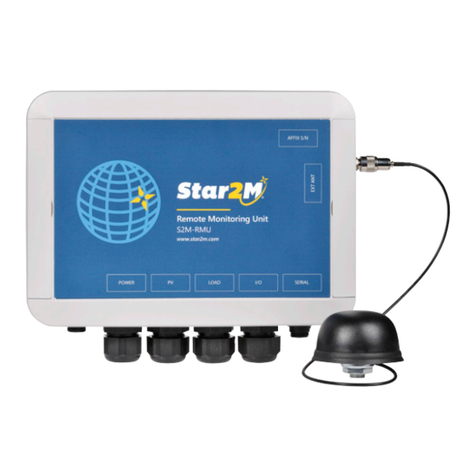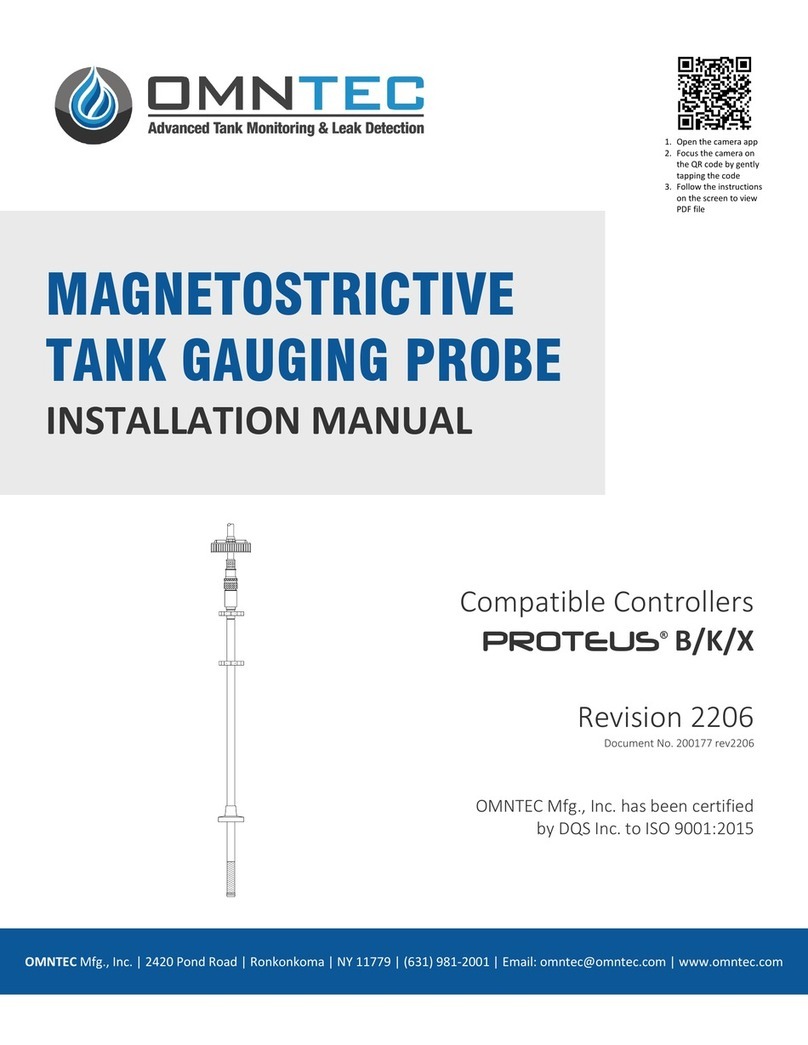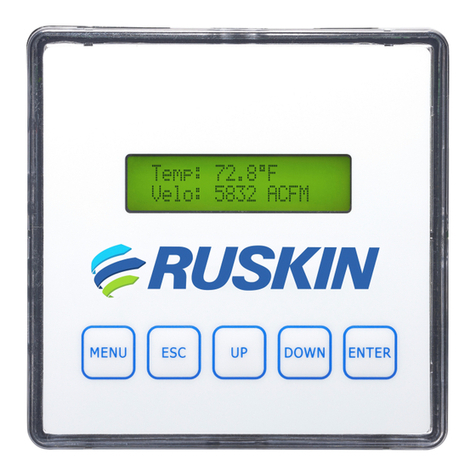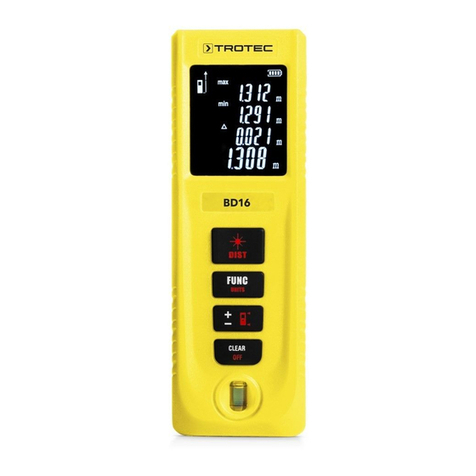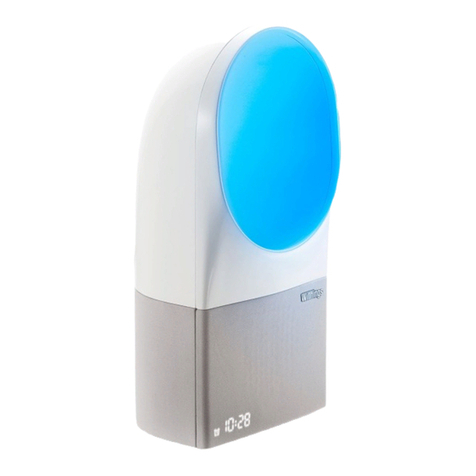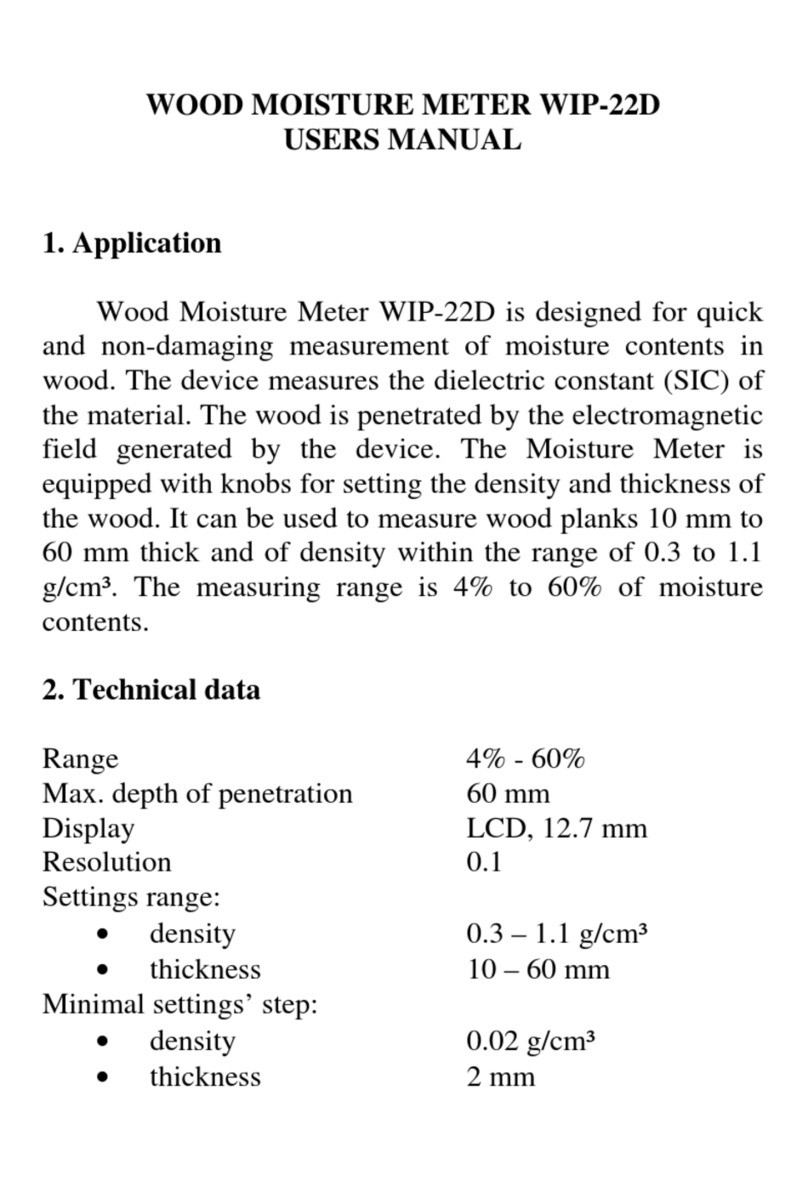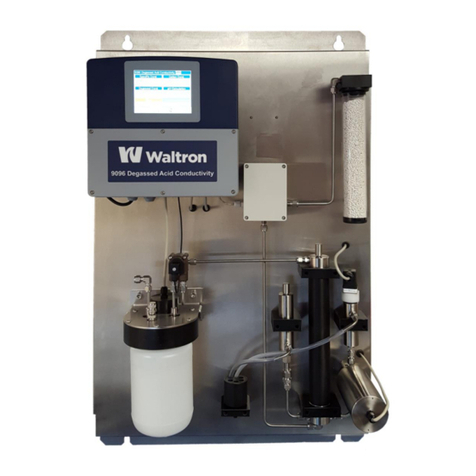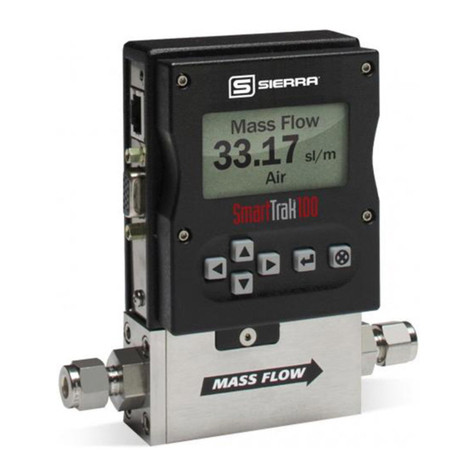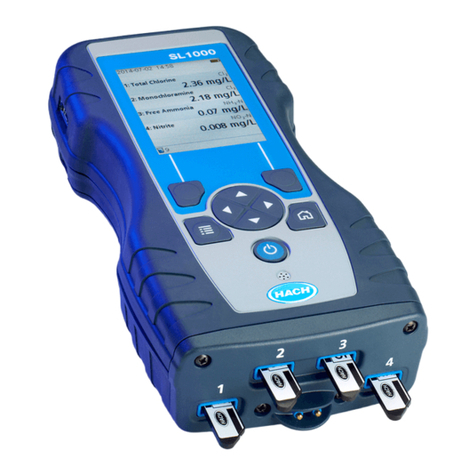Siko IK360 User manual

User manual
Inclinometer
with CANopen-Interface
IK360

IK360 -CAN xDate: 23.01.2017 Page 2 of 41 Art.no. 86089 Mod. Status 10/17
Table of content
1GENERAL SAFETY ADVICE.................................................................................................................... 4
2INTRODUCTION.......................................................................................................................................... 5
2.1 IK360.......................................................................................................................................................5
2.2 CANOPEN INTERFACE .............................................................................................................................5
2.3 IK360 CANOPEN.....................................................................................................................................5
3IK360 –MODES AND PARAMETERS .................................................................................................... 6
3.1 OPERATING MODES..................................................................................................................................7
3.1.1 Mode: Preoperational................................................................................................................... 7
3.1.2 Mode: Start Operational .............................................................................................................. 7
3.1.3 Mode: Stop Operation.................................................................................................................. 8
3.1.4 Reset of the inclinometer............................................................................................................. 8
3.1.5 Reset communication of the inclinometer................................................................................. 8
3.2 TRANSMISSION MODES ............................................................................................................................8
3.3 BOOT-UP PROCEDURE.............................................................................................................................9
4INSTALLATION ......................................................................................................................................... 10
4.1 PIN ASSIGNMENT....................................................................................................................................10
4.2 INSTALLATION PRECAUTIONS.................................................................................................................10
4.3 MOUNTING INSTRUCTIONS.....................................................................................................................10
4.4 BUS TERMINATION..................................................................................................................................11
4.5 MEASUREMENT AXIS..............................................................................................................................11
5IK360 SOFTWARE CONFIGURATION ................................................................................................. 12
5.1 IMPORTANT FACTORY SETTINGS............................................................................................................12
5.2 ACTIVE PROGRAMMING OBJECTS ..........................................................................................................13
5.3 PROGRAMMABLE PARAMETERS.............................................................................................................13
5.4 PDO TRANSMISSION .............................................................................................................................14
5.5 EXPLICIT EXCHANGES (SDO) ...............................................................................................................17
6WORKING WITH SCHNEIDER PLC...................................................................................................... 18
6.1 INTRODUCTION.......................................................................................................................................18
6.2 NETWORK INITIALIZATION.......................................................................................................................18
6.2.1 Hardware ..................................................................................................................................... 18
6.2.2 Software project information..................................................................................................... 19
6.3 CONFIGURATION ....................................................................................................................................21
6.4 DEBUGGING............................................................................................................................................23
6.5 RUN........................................................................................................................................................24
7TROUBLESHOOTING.............................................................................................................................. 27
8IK360 CANOPEN OBJECTS................................................................................................................... 28
8.1 OBJECT 1000H:DEVICE TYPE ..............................................................................................................28
8.2 OBJECT 1001H:ERROR REGISTER.......................................................................................................29
8.3 OBJECT 1003H:PRE-DEFINED ERROR FIELD ......................................................................................29
8.4 OBJECT 1005H:COB-ID SYNC ............................................................................................................29
8.5 OBJECT 1008H:MFR DEVICE NAME.....................................................................................................29
8.6 OBJECT 1009H:MFR HARDWARE VERSION.........................................................................................30
8.7 OBJECT 100AH:MFR SOFTWARE VERSION .........................................................................................30
8.8 OBJECT 100CH:GUARD TIME...............................................................................................................30
8.9 OBJECT 100DH:LIFE TIME FACTOR.....................................................................................................30
8.10 OBJECT 1010H:STORE PARAMETERS..................................................................................................30
8.11 OBJECT 1011H:RESTORE PARAMETERS.............................................................................................31
8.12 OBJECT 1014H:COB-ID EMERGENCY.................................................................................................31

IK360 -CAN xDate: 23.01.2017 Page 3 of 41 Art.no. 86089 Mod. Status 10/17
8.13 OBJECT 1016H:CONSUMER HEARTBEAT TIME....................................................................................32
8.14 OBJECT 1017H:PRODUCER HEARTBEAT TIME ....................................................................................32
8.15 OBJECT 1018H:IDENTITY OBJECT........................................................................................................32
8.16 OBJECT 2200H:CYCLIC TIMER.............................................................................................................33
8.17 OBJECT 2300H:SAVE PARAMETER WITH RESET.................................................................................33
8.18 OBJECT 2600H:PRESET X-AXIS (IK360-2 AXIS)/PRESET (IK360-1 AXIS).......................................33
8.19 OBJECT 2601H:PRESET Y-AXIS (IK360-2 AXIS).................................................................................33
8.20 OBJECT 3000H:NODE NUMBER ...........................................................................................................34
8.21 OBJECT 3001H:BAUD RATE..................................................................................................................34
8.22 OBJECT 3002H:TERMINATION RESISTOR ............................................................................................35
8.23 OBJECT 3022H:DIGITAL RECURSIVE FILTER.......................................................................................35
8.24 OBJECT 3100H:MOVING AVERAGE FILTER..........................................................................................35
8.25 OBJECT 6000H:RESOLUTION...............................................................................................................35
8.26 OBJECT 6010H:SLOPE LONG16...........................................................................................................36
8.27 OBJECT 6011H:SLOPE LONG16 OPERATING PARAMETER...................................................................36
8.28 OBJECT 6012H:SLOPE LONG16 PRESET VALUE..................................................................................36
8.29 OBJECT 6013H:SLOPE LONG16 OFFSET..............................................................................................37
8.30 OBJECT 6014H:DIFFERENTIAL SLOPE LONG16 OFFSET......................................................................37
8.31 OBJECT 6020H:SLOPE LATERAL16......................................................................................................37
8.32 OBJECT 6021H:SLOPE LATERAL16 OPERATING PARAMETER..............................................................37
8.33 OBJECT 6022H:SLOPE LATERAL16 PRESET VALUE.............................................................................38
8.34 OBJECT 6024H:DIFFERENTIAL SLOPE LATERAL16 OFFSET.................................................................38
8.35 OBJECT 6114H:DIFFERENTIAL SLOPE LONG32 OFFSET......................................................................39
9OUTPUT GRAPHS.................................................................................................................................... 39
GLOSSARY .........................................................................................................................................................41

IK360 -CAN xDate: 23.01.2017 Page 4 of 41 Art.no. 86089 Mod. Status 10/17
1 General Safety Advice
Read these instructions carefully and have a look at the equipment to become familiar with the
device before trying to install, operate or maintain it.
The following special messages may appear throughout this documentation & on the equipment
to warn of potential hazards or to call attention towards information that clarifies / simplifies a
procedure.
The addition of this symbol to a Danger or Warning safety label indicates that an
electrical hazard exists, which will result in personal injury, if the instructions are not
followed.
This is the safety alert symbol. It is used for alerting, in case of potential personal
injury or hazards. Obey all safety messages that follow this symbol to avoid possible
injury or death.
Please Note
Electrical equipment should be serviced only by qualified personnel. No responsibility is
assumed by SIKO for any consequences arising out of the use of this material. This document
is not intended as an instruction manual for untrained persons.
About this manual
This user manual explains how to install and configure the IK360 inclinometer with a CANopen
interface by illustrations.

IK360 -CAN xDate: 23.01.2017 Page 5 of 41 Art.no. 86089 Mod. Status 10/17
2 Introduction
2.1 IK360
IK360 inclinometers sense and measure the angle of tilt (Inclination/Slope/Elevation) of an
object with respect to the force of gravity. The angle is measured with the relative change in
electrical capacitance.
The basic principle behind this IK360 inclinometer is a Micro-Electro-Mechanical Systems
(MEMS) sensor cell, that is embedded to a fully molded ASIC. A simplified version of the sensor
consists of two electrodes, one is fixed, and the other is flexible (connected with spring
elements). When the inclinometer is parallel to the surface of measurement, a corresponding
capacitance is measured. If the sensor is tilted, the flexible electrode will change its position
relative to the fixed electrode. This results in a change of the capacitance between the two
electrodes, which is measured by the sensor cell. The change of the capacitance is converted to
a corresponding inclination value.
Absolute inclinometers identify all the points of a movement by means of an unambiguous
signal. Due to their capacity to give clear and exact values to all inclinations positions,
inclinometers have become one of the interesting alternatives to singleturn absolute (and
incremental) encoders and a link between the mechanical and control systems.
2.2 CANopen interface
CANopen is based on the Controller Area Network (CAN), that was developed by automotive
industries in the 80s and is nowadays used in many industrial applications. The application
protocol CANopen was introduced by the multi vendor association CAN in Automation (CiA) to
ensure a full compatibility of industrial automation products. It is a multiple access system
(maximum: 127 nodes), which means that all devices can access the bus. These devices/nodes
are the components of the CANopen bus and in our case the node is the IK360 inclinometer.
In simple terms, CANopen works as a client-server model. Each device checks whether the bus
is free and if it is free the device can send messages. If two devices try to access the bus at the
same time, the device with the higher priority level (lowest ID number) has permission to send
its message.
Devices with the lowest priority level must cancel their data transfer and wait before re-trying to
send their message. Data communication is carried out via messages. These messages consist
of a unique COB-ID (refer to glossary) followed by a maximum of 8 bytes of data. The COB-ID,
which determines the priority of the message, consists of a function code and a node number.
The node number corresponds to the network address of the device. It is and has to be unique
on a bus in order to distinguish nodes and prevent any conflict of interests.
The function code varies according to the type of message being sent:
Management messages (LMT, NMT)
Messaging and service (SDOs)
Data exchange (PDOs)
Predefined messages (Synchronization, Emergency messages)
2.3 IK360 CANopen
The IK360 CANopen inclinometer corresponds to the CANopen device profile for inclinometer
DS 410, in which the characteristics of inclinometers with CANopen interface are defined.

IK360 -CAN xDate: 23.01.2017 Page 6 of 41 Art.no. 86089 Mod. Status 10/17
In addition to high resolution, accuracy and protection class of IP69K, it has in-built active
linearization and temperature compensation. This makes IK360; IK360L suitable for rugged
environments and versatile applications in industrial, heavy duty and military applications.
The inclinometer supports the following operating modes:
Polled mode: The position value is transmitted only on request.
Cyclic mode: The position value is sent cyclically (regular, adjustable intervals) on the bus.
SYNC mode: The position value is sent, after a synchronization message (SYNC) is
received. The position value is sent every n SYNCs (n ≥ 1).
State change mode: The position value is transmitted, whenever the position of the
inclinometer, in continuous operation, changes.
The CANopen interface of the IK360 inclinometer permits transmission rates of up to 1 MBaud/s
(30 m / 100 ft cable for a maximum speed of 1 MBaud/s, 5000 m / 16,500 ft cable for a
maximum speed of 10 kBaud/s).
The IK360 CANopen is a flexible measurement device. This is proved by the fact, that it has
easily programmable parameters like resolution, preset and software filters. Other functions
such as offset values, baud rate and node number can also be configured using CANopen
objects in the IK360 inclinometers with ease and according to the network.
Various software tools for configuration and parameter-setting are available from different
suppliers. It is easy to align and program the inclinometers using the EDS (electronic data
sheet) configuration file provided.
3 IK360 –Modes and Parameters
The purpose of this chapter is to describe all the available configuration parameters of the IK360
inclinometers with a CANopen interface.
Before going into details the following information describes useful technical terms and
acronyms for CANopen network communication.
EDS (Electronic Data Sheet)
An EDS file describes the communication properties of a device on the CAN network (baud
rates, transmission types, I/O features, etc.). It is provided by the device manufacturer and is
used in the configuration tool to configure a node.
PDO (Process Data Object)
CANopen frame containing I/O data.
We distinguish between:
Transmit-PDOs (TPDOs with data provided by a node).
Receive-PDOs (RPDOs with data to be consumed by a node).
The transmission direction is always seen from a node's point of view.
SDO (Service Data Object)
CANopen frames containing parameters. SDOs are typically used to read or write parameters,
while the application is running.

IK360 -CAN xDate: 23.01.2017 Page 7 of 41 Art.no. 86089 Mod. Status 10/17
COB-ID (Communication Object Identifier)
Each CANopen frame starts with a COB-ID working as the identifier in the CAN frame.
Duringthe configuration phase each node receives the COB-ID(s) of the frame(s), for which it is
the provider (or consumer).
The NMT protocols are used to issue state machine change commands (i. e. to start and stop
the devices), detect remote device boot ups and error conditions.
NMT (Network Management Protocol)
3.1 Operating modes
3.1.1 Mode: Preoperational
When the device is in this state, its configuration can be modified. However, only SDOs can be
used to read or write device-related data.
The device goes into "Pre-Operational" state:
after the power up or
on receiving the "Enter Pre-Operational" NMT indication, if it was in operational state.
When configuration is complete, the device goes into one of the following states on receiving
the corresponding indication:
"Stopped" on receiving the "Stop Remote Node" NMT indication
"Operational" on receiving the "Start Remote Node" NMT indication.
To set one or all nodes to pre-operational mode, the master must send the following message:
Identifier
Byte 0
Byte 1
Description
0h
80h
00
NMT: Pre-operational Mode, all nodes
0h
80h
NN (in hex)
NMT: Pre-operational Mode, NN
NN: node number
3.1.2 Mode: Start Operational
The device goes into the "Operational" state, if it was in the "Pre-Operational" state on receiving
the "Start Remote Node" indication. When the CANopen network is started using the "Node
start" NMT services in "Operational" state, all device functionalities can be used.
Communication is possible by PDOs or SDOs.
Note: Modifications to the configuration in "Operational" mode may have unexpected
consequences and should therefore only made in "Pre-Operational" mode.
To put one or all nodes in the operational state, the master has to send the following message:
Identifier
Byte 0
Byte 1
Description
0h
01h
00h
NMT: Start Remote Node, all nodes
0h
01h
NN (in hex)
NMT: Start Remote Node, NN
NN: node number

IK360 -CAN xDate: 23.01.2017 Page 8 of 41 Art.no. 86089 Mod. Status 10/17
3.1.3 Mode: Stop Operation
The device goes into the "Stopped" state on receiving the "Node stop" indication (NMT service),
if it was in "Pre-Operational" or "Operational" state. In this state, the device cannot be
configured. No service is available to read and write device-related data (SDO). Only the slave
monitoring function "Node Guarding" remains active.
To put one or all nodes in the stop operational state, the master has to send the following
message:
Identifier
Byte 0
Byte 1
Description
0h
02h
00h
NMT: Stop Remote Node, all nodes
0h
02h
NN (in hex)
NMT: Stop Remote Node, NN
NN: node number
3.1.4 Reset of the inclinometer
If a node is not operating correctly, it is advisable to carry out a reinitialization.
Identifier
Byte 0
Byte 1
Description
0h
81h
00h
NMT: Reset Node
0h
81h
NN (in hex)
NMT: Reset Node
NN: node number
After reinitialization the inclinometer accesses the bus in pre-operational mode.
3.1.5 Reset communication of the inclinometer
If the communication of a node is not operating correctly, it is advisable to carry out a reset of
the communication.
Identifier
Byte 0
Byte 1
Description
0h
82h
00h
NMT: Reset Communication
0h
82h
NN (in hex)
NMT: Reset Communication
NN: node number
After reset of the communication, the inclinometer accesses the bus in pre-operational mode.
3.2 Transmission modes
Polled mode
By a remote-transmission-request telegram the connected host calls
for the current process value. The inclinometer reads the current
position value, calculates eventually set-parameters and sends back
the obtained process value by the same identifier.
Cyclic mode
The inclinometer cyclically transmits (without being called by the
host) the current process value. The cycle time can be programmed
in milliseconds for values between 0 ms and 65536 ms.

IK360 -CAN xDate: 23.01.2017 Page 9 of 41 Art.no. 86089 Mod. Status 10/17
SYNC mode
After receiving a SYNC telegram by the host the inclinometer
answers with the current process value. If more than one node
number (encoder) shall answer after receiving a SYNC telegram, the
answer telegrams of the nodes will be received by the host in order
of their node numbers. The programming of an offset-time is not
necessary. If a node should not answer after each SYNC telegram
on the CAN network, the parameter sync counter can be
programmed to skip a certain number of sync telegrams before
answering again.
3.3 Boot-up procedure
The general boot-up procedure for the IK360 CANopen and the mapping of various modes are
illustrated below.
Number
Description
1
Module Power up
2
After initialization, the module automatically goes into pre-operational
mode
3
NMT: Start Remote Node
4
NMT: Pre-operational Mode
5
NMT: Stop Remote Node
6
NMT: Reset Node
7
NMT: Reset Communication
To set one or all nodes to pre-operational mode, the master must send the following message.

IK360 -CAN xDate: 23.01.2017 Page 10 of 41 Art.no. 86089 Mod. Status 10/17
4 Installation
4.1 Pin assignment
The inclinometer is connected via a 5 pin round M12 connector (Standard M12, male connector
on IK360, female connector at connection cable).
Pin
Description
1
CAN Ground
2
10-30 V supply voltage
3
0 V supply voltage
4
CAN High
5
CAN Low
4.2 Installation precautions
ATTENTION !!!
Do not remove or mount while the inclinometer is under power!
Avert any modifications to the plastic molding!
Avoid mechanical load!
4.3 Mounting instructions
IK360 is a pre-calibrated device, which can be put into immediate operation, upon simple and
easy installation with a three point mount and setting of preset. Its compact design and
installation "anywhere" makes it versatile.
The IK360 inclinometer can be mounted in any number of fashions, depending on the situation.
The mounting surface must be plane and free of dust and grease. It is absolutely necessary,
that the IK360 inclinometer is connected to potential equalization in a workmanlike manner. For
mounting we recommend cheese head screws with metrical thread M4 or UNC bolts #6 for the
best possible and secure mounting. Use all the 3 screws for mounting, but restrict the tightening
torque in the range of 1.5 –2.5 Nm for the screws. The M12 connectors are to be perfectly
aligned and screwed till the end with a tightening torque in the range of 0.4 -0.6 Nm. Use all the
three screws for mounting and also note to use the same tightening torque for all the screws. An
appropriate and well secured counter connector is also an important constraint for attaining the
stated IP69K protection.
Prior to installation, please check for all connection and mounting instructions to be complied
with. Please also observe the general rules and regulations on low voltage technical devices, for
safety and sustainability of IK360 Inclinometers over long period of time.

IK360 -CAN xDate: 23.01.2017 Page 11 of 41 Art.no. 86089 Mod. Status 10/17
4.4 Bus termination
If the inclinometer is connected at the end or beginning of the bus for higher transmission baud
rates (≥50 kBaud/s) a termination resistor of 120 Ohm must be used in order to prevent the
reflection of information back into the CAN bus.
The bus wires can be routed in parallel, twisted or shielded form in accordance with the
electromagnetic compatibility requirements. A single line structure minimizes reflection.
The following diagram shows the components for the physical layer of a two-wire CAN-bus:
4.5 Measurement axis IK360 (1 axis)
Measurement axis and mid angle position
(factory setting ~ connector facing down)
CAN Low wire
CAN High wire
IK360
inclinometer
IK360
inclinometer
120
Ω
120Ω
Other CAN nodes
PLC
CANope
n
Master

IK360 -CAN xDate: 23.01.2017 Page 12 of 41 Art.no. 86089 Mod. Status 10/17
IK360 (2 axis)
5 IK360 Software Configuration
This chapter succeeds the hardware configuration (i. e. installation) as in real time. IK360 is a
very flexible device and hence all the parameters can be programmed via CAN bus itself even
when attached. This enables remote configuration. This chapter is primarily divided into two
parts. In first part the methodology is described for putting the IK360 into operation and in the
second part the PDO/SDO programming of IK360.
5.1 Important factory settings
Description
Object
Value
Device Type
1000h
0 x 3019A (IK360 1 axis)
0 x 4019A (IK360 2 axis)
Cyclic Timer
2200h
00h (0 ms)
Resolution
6000h
0Ah (0.01°)
Node Number
3000h
00h (NN = 1)
Baud Rate
3001h
03h (125 kB)
PDOs
6010h
Note: The factory settings should be noted carefully upon installation. Few of the
parameters have to be re-programmed in order to make the IK360 inclinometers
compatible with the controller or the already existing CAN bus to which it is going to be
installed on.

IK360 -CAN xDate: 23.01.2017 Page 13 of 41 Art.no. 86089 Mod. Status 10/17
5.2 Active programming objects
Active CANopen objects depending on the state of IK360. The crosses in the table below
indicate, which CANopen objects are active in each state.
Initialization
Pre-Operational
Operational
Stopped
PDO Object
X
SDO Object
X
X
Boot-Up
X
X
NMT
X
X
X
5.3 Programmable parameters
Objects are based on the CiA 301 DS and CiA 410 DS V1.2. The following table gives the list of
command identifiers sent and received by the inclinometer. These are the standard commands
used for communication and transmission between a master and slave in the CAN bus. It is
quite useful for the analysis of communication logs between the master and slave and for better
understanding of the system under observation.
Command
Function
Telegram
Description
22h
SDO Upload
Request
Parameter to IK360
60h
SDO Upload
Confirmation
Acknowledge “Parameter received”
40h
SDO Download
Request
Parameter request
43h, 4Bh, 4Fh (*)
SDO Download
Reply
Parameter to Master
80h
Warning
Reply
Transmission error
Table 1: Command description
(*) The value of the command byte depends on the data length of the called parameter (see
table 2).
Command
Data length
Data length
43h
4 Byte
Unsigned 32
4Bh
2 Byte
Unsigned 16
4Fh
1 Byte
Unsigned 8
Table 2: Data length of commands
The following list of objects is the most frequently used objects, while programming the IK360
inclinometer. The whole list of objects is available in appendix A.
Position Value
(Objects 6010h
and 6020h)
The object 6010h and 6020h are used to get the scaled inclination
positions (integer 16 variables) of IK360-2 axis in the range of ±80° and
the object 6010h is used to get the scaled inclination position of IK360-1
axis in the range of 0 –359.99°.
Store Parameters
(Objects 1010h,
2300h)
These objects are used to store any re-configured parameters. Object
1010h just stores the parameters, whereas 2300h stores and saves the
parameters upon reset of the IK360.
Resolution per 1°
(Object 6000h)
The parameter, resolution per degree, is used to program the desired
number of angular divisions per revolution. The values 1, 10, 100 can be
programmed.

IK360 -CAN xDate: 23.01.2017 Page 14 of 41 Art.no. 86089 Mod. Status 10/17
Operating
Parameter
(Object 6011h)
With the operating parameter it is possible to change the sense of
rotation (inversion) and switch on/off the scaling. For using the preset
function the scaling has to be switched on.
Bit 1
Bit 0
Position Calculation
0
0
X
0
1
-X (10000h –X für 16
bit objects, 100000000h
–X for 32bit objects)
1
0
(X + Object 6013h +
Object 6014h)
1
1
(-X + Object 6013h +
Object 6014h)
Preset Value
(Object 6012h)
The preset value is the desired position value, which should be reached
at a certain physical position of the axis. The position value is set to the
desired process value by the parameter preset, when scaling is
switched on. IK360-2 axis used Object 6012h for X-Axis and Object
6013h for Y-Axis. IK360-1 axis used Object 6012h for the Z-Axis.
Node Number
(Object 3000h)
The setting of the node number is achieved via SDO-Object. Possible
(valid) addresses lie between 1 and 127, but each address can only be
used once.
Baud rate
(Object 3001h)
The baud rate can be programmed via SDO.
Filter
(Objects
3100h/3022h)
Filter can be used to adjust the frequency of measurements and
calculation of position values. Object 3100h corresponds to moving
average filter and 3022h is for digital recursive filter. Default: Object
3100h, Object 3022h: 0).
Appendix A has a detailed list of all the objects, which can be programmed with IK360
CANopen. The data type, data size, default value, r/w access definition and all sub-indexes are
mentioned in it. It is necessary to read the appendix A for clear knowledge before programming.
Appendix A has a lot of important programming tips, which are necessary for the proper use of
the inclinometer.
5.4 PDO Transmission
Process Data Objects (PDOs) communicate process information / data and enable them to be
exchanged in real time. A CANopen device's PDO set describes the implicit exchanges between
this device and its communication partners on the network. The exchange of PDOs is
authorized, when the device is in "Operational" mode.
Note: The PDOs can be directly mapped in to memory locations on the controller and can
be viewed upon reading those memory locations. An example is provided in the next
section with a SCHNEIDER-TWIDO controller.

IK360 -CAN xDate: 23.01.2017 Page 15 of 41 Art.no. 86089 Mod. Status 10/17
Object 1800h: 1st Transmit PDO communication parameter
This object contains the communication parameter of the 1st transmit PDO.
Subindex *
Description
Data Type
Default Value
Access
Restore after
BootUp
00h
Number of sub
indices
Unsigned 8
5
ro
yes
01h
COB-ID
Unsigned 32
180h + Node ID
rw
yes
02h
Transmission
Mode
Unsigned 8
0xFE
rw
yes
03h
Inhibit Time
Unsigned 32
0x00
rw
yes
04h
Not Available
05h
Event Timer
Unsigned 32
0x00
rw
yes
* Subindex: Second degree identifier used in combination with the object. (Follows the object
numbe
Object 1801h: 2nd Transmit PDO communication parameter
This object contains the communication parameter of the 2nd transmit PDO.
Subindex *
Description
Data Type
Default Value
Access
Restore after
BootUp
00h
Number of sub
indices
Unsigned 8
5
ro
yes
01h
COB-ID
Unsigned 32
280h + Node ID
rw
yes
02h
Transmission
Mode
Unsigned 8
0xFE
rw
yes
03h
Inhibit Time
Unsigned 32
0x00
rw
yes
04h
Not Available
05h
Event Timer
Unsigned 32
0x00
rw
yes
* Subindex: Second degree identifier used in combination with the object. (Follows the object
number)
Transmission mode
The transmission mode (Sub index 2) for Objects 1800 and 1801 can be configured as
described below.
Transfer
Value
(Dec)
Transmission Mode
Notes
Cyclic
Acyclic
Synchr-
onous
Asynchr-
onous
RTR
Only
0
X
X
Send PDO on first sync
message following an
event
1-240
X
X
Send PDO every x sync
messages
241-251
Reserved
252
X
X
Receive sync and send
PDO on remote transmit
request
253
X
Update data and send PDO
on remote transmit request

IK360 -CAN xDate: 23.01.2017 Page 16 of 41 Art.no. 86089 Mod. Status 10/17
Transfer
Value
(Dec)
Transmission Mode
Notes
Cyclic
Acyclic
Synchr-
onous
Asynchr-
onous
RTR
Only
254
X
Send PDO on event (event-
timer is expired)
255
X
Send PDO on Event
(position value has
changed)
Inhibit Time
The "inhibit time" for PDO transmissions can be entered in this 16 bit field. If data is changed,
the PDO sender checks whether an "inhibit time" has expired since the last transmission. A new
PDO transmission can only take place, if the "inhibit time" has expired. The "inhibit time" is
useful for asynchronous transmission (transmission mode 254 and 255), to avoid overloads on
the CAN bus.
Event Timer
The "event timer" only works in asynchronous transmission mode (transmission mode 254 and
255). If the data changes before the "event timer" expires, a temporary telegram is sent. If a
value >0 is written in this 16-bit field, the transmit PDO is always sent after the "event timer"
expires. The value is written in sub index 5 of the object 1800 or 1801. The data transfer also
takes place with no change to data. The range is between 1-65536 ms.
Cyclic Timer
The cyclic timer is useful to set the position transmission to cyclic mode. The cyclic timer can be
programmed from 0 ms to 65536 ms. When enabled, the IK360 transmits the position value
contained in the PDO at constant prescribed intervals, even if there is no change in the position
value. Object 2200h is used to set the cyclic timer value.
Object 1A00h: 1st Transmit PDO Mapping parameter
This object contains the mapping parameter of the 1st transmit PDO.
Subindex *
Description
Data Type
Default Value
Access
Restore after
BootUp
0
Number of sub
indices
Unsigned 8
80° (IK360-2 axis)
360° (IK3601 axis)
ro
yes
1
Mapped object
Unsigned 32
6010 00 10
rw
yes
2
Mapped object
Unsigned 32
6020 00 10
rw
yes
Object 1A01h: 2nd Transmit PDO Mapping parameter
This object contains the mapping parameter of the 2nd transmit PDO.
Subindex *
Description
Data Type
Default Value
Access
Restore after
BootUp
0
Number of sub
indices
Unsigned 8
80° (IK360-2 axis)
360° (IK360-1 axis)
ro
yes
1
Mapped object
Unsigned 32
6010 00 10
rw
yes
2
Mapped object
Unsigned 32
6020 00 10
rw
Yes

IK360 -CAN xDate: 23.01.2017 Page 17 of 41 Art.no. 86089 Mod. Status 10/17
5.5 Explicit Exchanges (SDO)
Service Data Objects (SDOs) allow a device's data to be accessed by using explicit requests.
The SDO service is available, when the device is in "Operational" or "Pre-Operational" state.
Types of SDO
There are two types of SDO:
Read SDOs (Download SDOs),
Write SDOs (Upload SDOs).
The SDO protocol is based on a 'Client / Server' model:
For a download SDO:
The server sends a request, indicating the object to be read. The client returns the data
contained within the object.
For an upload SDO:
The server sends a request, indicating the object to be written to and the desired value. After
the object has been updated, the client returns a confirmation message.
For an unprocessed SDO:
In both cases, if a SDO could not be processed, the device / master returns an error code.
A typical illustration of SDO for reading the current baud rate value explicitly is given below:
SDO passed as a new message to the device
We used a PEAK™ CAN master for this illustration. The PCAN®-USB adapter enables simple
connection to CAN networks.
The PCAN®-USB's compact plastic casing makes it suitable for mobile applications. It works as
a master on the CAN bus connection via D-Sub, 9-pin and in accordance with CiA 102
standards.
Object 3001h is to read the baud rate value from the IK360.
Transmit message
ID: 601h - Message to node number 1
Length: 8 byte
Data 0: Read (40h)
Data 1 & 2 : Object in big endian (30 01 is 01 30 in big endian format)
Data 3: Sub-Index (NA)
Data 4-7: Data to be written (NA in read command)

IK360 -CAN xDate: 23.01.2017 Page 18 of 41 Art.no. 86089 Mod. Status 10/17
The received message
ID: 581h - message from node number 1
Data 0: length of data is 1 byte
Data 4-7: 01 equates 50 kBaud/s
Received Message from the device
So, SDOs can be used to explicitly read or write data in IK360. All the relevant objects, that can
be configured, are described in Appendix A.
In the above example 701h is the boot up message received. Then once we transmit the SDO
command as shown above, we receive a reply. The received message, 581h, consists of the
SDO downloaded.
6 Working with Schneider PLC
6.1 Introduction
An IK360, single axis inclinometer was connected to a TWIDO programmable logic controller
with a CANopen communication interface.
The step-by-step connection procedure and the working of inclinometer in a CAN bus is
illustrated in the following sections. Please note, that the programming in other control systems
may vary individually. Please have this section as a reference for IK360's working with
programmable logic controllers.
6.2 Network initialization
6.2.1 Hardware
The initial step in setting up an IK360 is integrating it into the existing hardware. The following
illustration shows an IK360 integrated into a PLC with an CANopen communication interface.
It is very important to add termination resistors to the IK360, which are used at the start or end
of the CANopen bus in order to prevent data corruption or missing of data at higher
transmission bandwidths (≥50 kB).

IK360 -CAN xDate: 23.01.2017 Page 19 of 41 Art.no. 86089 Mod. Status 10/17
Hardware setup and wiring
6.2.2 Software project information
Once the hardware setup is done, the IK360 should be configured in such a way, that it is
compatible to the already existing setup and gives a proper position output.
Controller Description

IK360 -CAN xDate: 23.01.2017 Page 20 of 41 Art.no. 86089 Mod. Status 10/17
CANopen Master Configuration
IK360 inclinometer –Electronic Data Sheet (EDS)
The IK360 EDS file once uploaded will load all the objects including the PDOs to the controller.
The Schneider system automatically identifies the PDOs and maps them on to the slave device.
Connection network setup
The illustration below describes the connection of the elements in the CAN bus. At first the
CANopen communication interface is connected to the main controller. Then the inclinometer is
connected to the CANopen communication interface.
The next step after the setup of the network is the configuration of all the parameters and
settings, to facilitate the communication between the master, slave and the controller.
This picture is the overall description of the setup, with the TWIDO TWDLMDA20DTK controller,
TWDNCO1M CANopen communication expansion module and the IK360 EDS file.
Other manuals for IK360
2
Table of contents
Other Siko Measuring Instrument manuals
